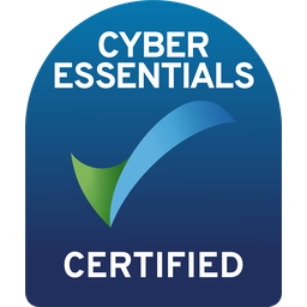
101: Safeguarding Your Business in the Digital Age
Essential tips and best practices for protecting your business
Introduction to Cybersecurity
As technology continues to advance, businesses are becoming increasingly reliant on digital systems and networks. While this digital transformation has brought numerous benefits, it has also opened the door to new threats and vulnerabilities.
That’s where cybersecurity comes in. In this article, we will explore the world of cybersecurity, its importance for businesses, and how you can safeguard your organisation in the digital age.
The Importance of Cybersecurity for Businesses
In today’s interconnected world, cybersecurity has become a critical aspect of business operations. Cyberattacks can have devastating consequences, leading to financial loss, damage to reputation, and even legal issues. Therefore, implementing robust cybersecurity measures is essential to protect sensitive data, maintain customer trust, and ensure business continuity.
One of the primary reasons cybersecurity is vital for businesses is the increasing sophistication of cybercriminals. Hackers are constantly finding new ways to exploit vulnerabilities and gain unauthorised access to systems. From phishing attacks to malware infections, businesses face a wide range of threats that can compromise their data and infrastructure. By prioritising cybersecurity, organisations can stay one step ahead of these threats and minimise the risk of a successful attack.
Common Cybersecurity Threats and Attacks
To effectively protect your business, it’s crucial to understand the common cybersecurity threats and attacks you may face. One prevalent threat is phishing, where attackers use deceptive emails or messages to trick employees into revealing sensitive information or downloading malicious software. Another common attack is ransomware, where hackers encrypt your data and demand a ransom for its release. Other threats include malware, social engineering, and distributed denial-of-service (DDoS) attacks.
To mitigate these risks, businesses must implement a multi-layered approach to cybersecurity. This includes robust firewalls, secure network configurations, regular software updates, and employee training on identifying and reporting potential threats. By being proactive and staying informed about the latest threats, you can significantly enhance your organisation’s cybersecurity posture.
Understanding the Basics of Cybersecurity
Before delving further into cybersecurity practices, it’s essential to have a basic understanding of what cybersecurity entails. At its core, cybersecurity involves protecting computer systems, networks, and data from unauthorised access, damage, or theft. This involves a combination of technical measures, policies, and procedures designed to safeguard your organization’s digital assets.
One fundamental concept in cybersecurity is confidentiality. This refers to ensuring that only authorised individuals can access sensitive information. Encryption plays a crucial role in maintaining confidentiality, as it scrambles data in a way that can only be deciphered with the correct encryption key.
Integrity is another vital aspect of cybersecurity. It involves preventing unauthorised changes or modifications to data. Data integrity can be ensured through techniques such as checksums or digital signatures, which verify the integrity of files and detect any tampering.
Lastly, availability is a key consideration in cybersecurity. It involves ensuring that systems and data are accessible to authorised users when needed. This can be achieved through redundant systems, backup solutions, and disaster recovery plans.
Creating a Cybersecurity Plan for Your Business
To effectively protect your business, it’s essential to have a comprehensive cybersecurity plan in place. This plan should outline the specific steps and measures your organisation will take to safeguard its digital assets. Here are some key elements to consider when creating your cybersecurity plan:
- Risk Assessment: Conduct a thorough assessment of your businesses digital vulnerabilities and potential risks. Identify the assets that are most critical to your business and evaluate the impact of a cybersecurity breach.
- Policies and Procedures: Establish clear policies and procedures that govern how employees should handle sensitive data, access systems, and respond to potential threats. Regularly review and update these policies to keep pace with evolving cybersecurity landscape.
- Employee Training: Provide comprehensive cybersecurity training to all employees. This should include education on recognising and reporting potential threats, safe internet browsing practices, and the importance of strong passwords.
- Access Controls: Implement robust access controls to ensure that only authorised individuals can access sensitive data and systems. This may include the use of multi-factor authentication, role-based access controls, and regular access reviews.
- Incident Response Plan: Develop a detailed incident response plan that outlines the steps your business will take in the event of a cybersecurity incident. This should include procedures for containment, investigation, recovery, and communication.
By following these guidelines and tailoring them to your businesses specific needs, you can create a cybersecurity plan that provides a solid foundation for protecting your business.
Book a FREE cyber security audit
Essential Cybersecurity Practices for Businesses
In addition to creating a cybersecurity plan, there are several essential practices that businesses should implement to enhance their cybersecurity posture. These practices, when combined, create multiple layers of defence that significantly reduce the risk of a successful cyber attack. Here are some key practices to consider:
- Regular Software Updates: Keep all software and operating systems up to date with the latest security patches. Outdated software often contains vulnerabilities that hackers can exploit. Implement a patch management process to ensure timely updates across your business.
- Strong Passwords: Enforce the use of strong passwords for all user accounts. Passwords should be long, unique, and contain a combination of uppercase and lowercase letters, numbers, and special characters. Consider implementing a password manager to simplify password management and encourage good password hygiene.
- Secure Network Configurations: Configure your network securely, using firewalls, intrusion detection systems, and virtual private networks (VPNs) to protect against unauthorized access. Regularly monitor network traffic for any signs of suspicious activity.
- Data Encryption: Implement encryption for sensitive data, both at rest and in transit. This ensures that even if data is intercepted or stolen, it remains unreadable without the encryption key.
- Backup and Recovery: Regularly back up your critical data and test the restoration process to ensure its integrity. This allows you to recover quickly in the event of a data loss incident, such as a ransomware attack.
By incorporating these cybersecurity practices into your business operations, you can significantly reduce the likelihood and impact of a cyber attack.
Cybersecurity Services and Solutions
For businesses that lack the resources or expertise to handle cybersecurity internally, there are numerous cybersecurity services and solutions available. These services range from managed security service providers (MSSPs) to specialised software solutions and consulting businesses. Here are some key cybersecurity services and solutions to consider:
- Managed Security Services: MSSPs offer a range of managed security services, including network monitoring, threat detection, incident response, and vulnerability management. By outsourcing these functions, businesses can access expert cybersecurity resources without the need for a dedicated in-house team.
- Endpoint Protection: Endpoint protection solutions provide advanced security measures for individual devices, such as laptops, desktops, and mobile devices. These solutions often include features like antivirus, firewall, and intrusion prevention.
- Security Information and Event Management (SIEM): SIEM solutions collect and analyse security event data from various sources, allowing businesses to detect and respond to potential threats in real-time. SIEM solutions provide valuable insights into the security posture of your organization.
- Penetration Testing: Penetration testing, also known as ethical hacking, involves simulating real-world cyber attacks to identify vulnerabilities in your systems. This helps businesses proactively address weaknesses before they can be exploited by malicious actors.
- Cybersecurity Consulting: Cybersecurity consulting firms provide expert advice and guidance on developing and implementing effective cybersecurity strategies. They can help businesses assess their current security posture, identify areas for improvement, and develop tailored solutions.
How to Choose the Right Cybersecurity Services for Your Business
When selecting cybersecurity services for your business, it’s crucial to choose the right partner that aligns with your specific needs and requirements. Here are some factors to consider when evaluating potential cybersecurity service providers:
- Expertise and Experience: Look for providers with proven expertise and experience in your industry. They should have a track record of successfully addressing cybersecurity challenges similar to those your business faces.
- Scalability: Ensure that the services offered can scale with your business as it grows. Your cybersecurity partner should be able to adapt to changing needs and provide flexible solutions.
- Compliance and Certifications: If your business operates in a regulated industry, ensure that the cybersecurity service provider complies with relevant regulations and has appropriate certifications. This demonstrates their commitment to maintaining high standards of security.
- 24/7 Monitoring and Support: Cyber threats can occur at any time, so it’s important to choose a provider that offers round-the-clock monitoring and support. This ensures that potential threats are detected and responded to promptly.
- Cost-Effectiveness: While cybersecurity is crucial, it’s also important to consider the cost. Evaluate the pricing structure of potential providers and ensure that the services offered provide value for money.
By carefully evaluating potential cybersecurity service providers based on these criteria, you can make an informed decision that best meets the cybersecurity needs of your business.
The Future of Cybersecurity
As technology continues to evolve, so too will the cybersecurity landscape. New threats will emerge, and hackers will find innovative ways to exploit vulnerabilities. Therefore, it’s essential for businesses to stay ahead of the curve and continually adapt their cybersecurity strategies. Here are some key trends to watch in the future of cybersecurity:
- Artificial Intelligence and Machine Learning: AI and machine learning technologies are increasingly being leveraged in cybersecurity to detect and respond to threats in real-time. These technologies can analyse vast amounts of data and identify patterns that humans may miss.
- IoT Security: As the Internet of Things (IoT) expands, securing connected devices will become critical. Businesses will need to implement robust security measures to protect IoT devices and the data they generate.
- Cloud Security: With more businesses leveraging cloud services, ensuring the security of cloud environments will be paramount. Implementing strong identity and access management, encryption, and regular audits will be essential.
- Cybersecurity Regulations: Governments around the world are enacting stricter cybersecurity regulations to protect sensitive data. Businesses will need to stay abreast of these regulations and ensure compliance to avoid penalties.
- Cybersecurity Workforce Development: As the demand for cybersecurity professionals continues to grow, businesses will need to focus on workforce development. This may involve training existing employees in cybersecurity skills or partnering with educational institutions to recruit and develop talent.
By staying informed about these trends and proactively adapting your cybersecurity strategies, you can better protect your business in the evolving digital landscape.
Conclusion
In today’s digital age, cybersecurity is no longer optional for businesses—it is an essential requirement for safeguarding your business. By understanding the importance of cybersecurity, recognizing common threats, and implementing best practices, you can significantly reduce the risk of a cyber attack.
Whether you choose to handle cybersecurity internally or leverage external services, prioritising cybersecurity is crucial for maintaining the trust of your customers, protecting your data, and ensuring the long-term success of your business.
Protect your business from cyber threats
Contact us today to learn more about our comprehensive cybersecurity services and how we can help safeguard your business in the digital age.

